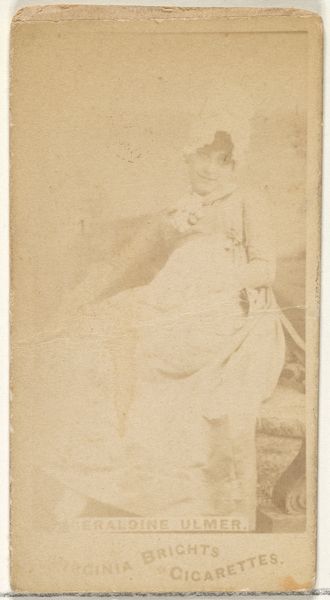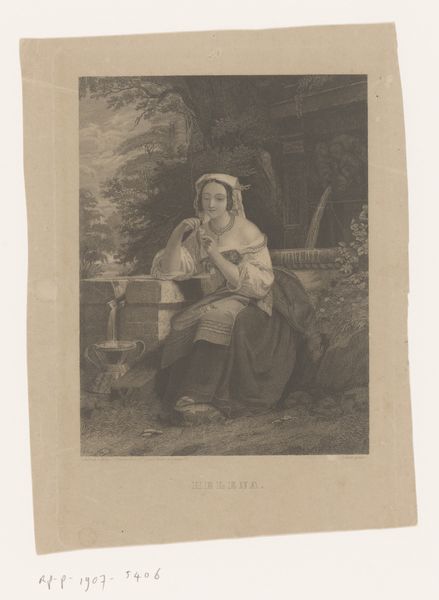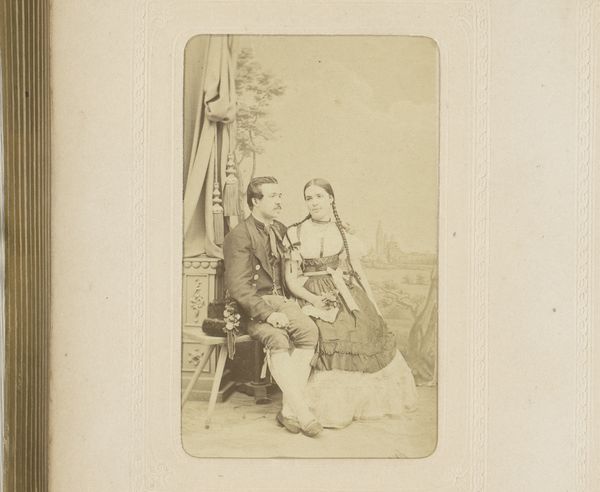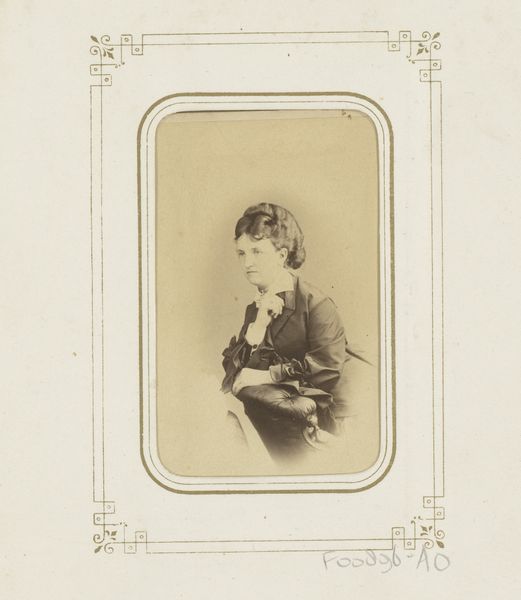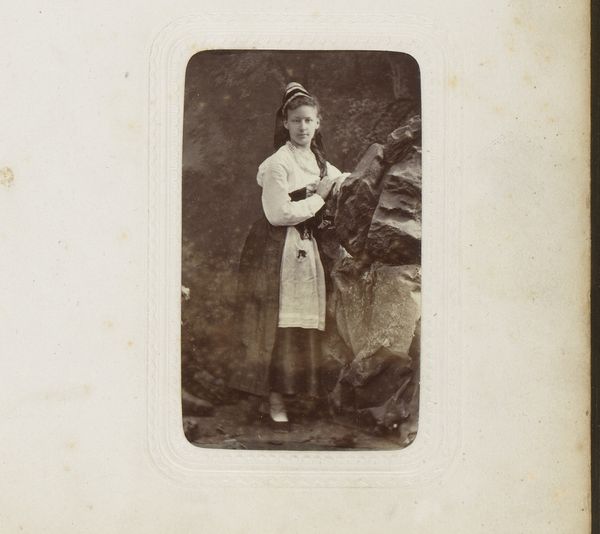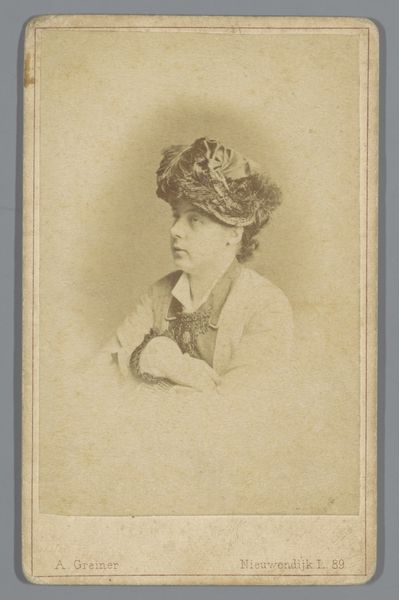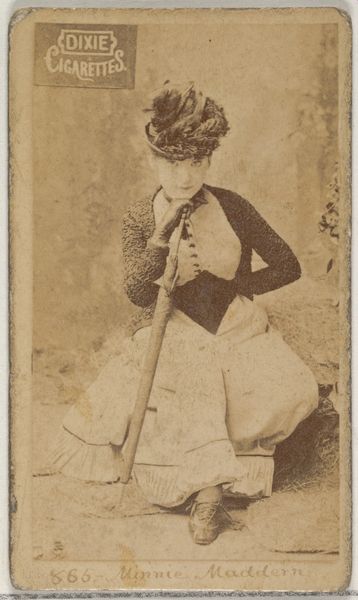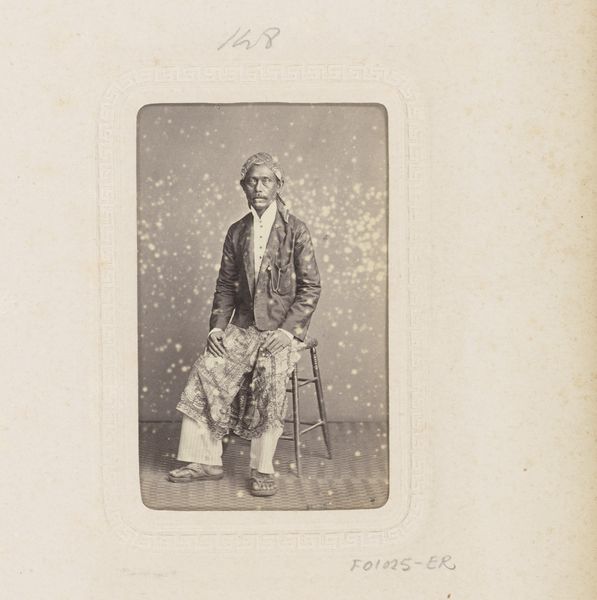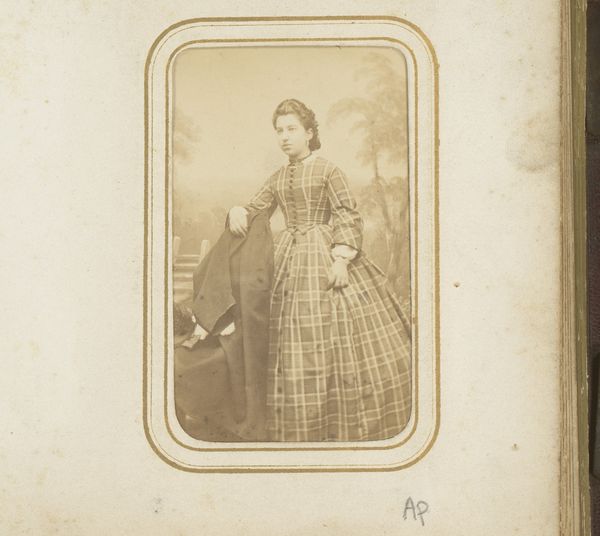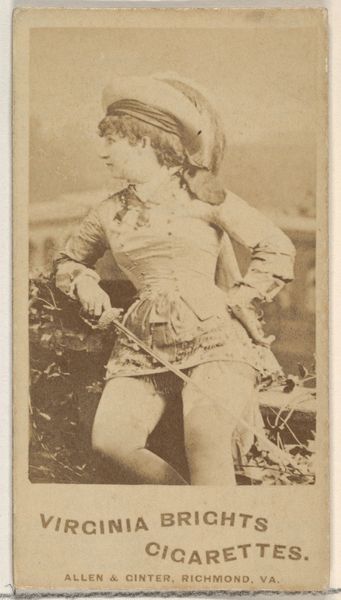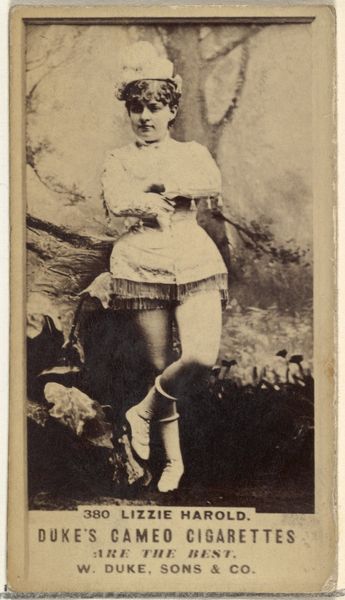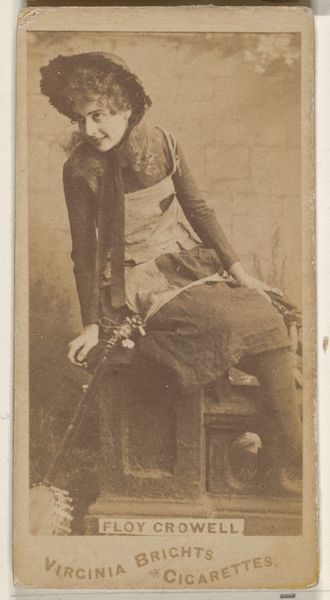
Portret van een acteur, zittend in een decor van een landschap, aangeduid als Michael Aagaard 1865 - 1891
0:00
0:00
daguerreotype, photography
#
portrait
#
landscape
#
daguerreotype
#
photography
#
historical photography
#
realism
Dimensions: height 137 mm, width 97 mm
Copyright: Rijks Museum: Open Domain
Curator: This daguerreotype, created between 1865 and 1891, is titled "Portret van een acteur, zittend in een decor van een landschap, aangeduid als Michael Aagaard" by Georg Emil Hansen. It’s quite striking, don't you think? Editor: It's sepia-toned, stagey. The light and composition seem carefully calibrated to create an impression of pastoral charm. Curator: Precisely. Hansen worked extensively as a photographer for the Royal Danish Court. The albumen process evident in the print involved meticulous preparation—the coating of the paper, its exposure, development. The materials used clearly allowed Hansen to capture this fine tonal range. Editor: The actor’s pose feels unnatural and forced against that background; how much of this staged image can be seen as truthful? Consider his attire; it looks specifically chosen. Its construction details speak to both costume and a specific role the actor sought to convey. Curator: The combination of his somewhat absurd, but clearly high-quality garb, and the rustic scene is definitely an indicator of his chosen role; one that probably alludes to rural aristocracy. And while the backdrop creates a constructed scene, the quality and craftmanship that Hansen devoted to photography are, for me, where it shows its strengths. It isn’t simply a captured image; it's a produced artefact. Editor: Yet, to me, there's a tension between the reality of photographic detail and this highly artificial setting. This tension creates something unique, an uncanny, haunting realism that belies the romantic aesthetic. It speaks of the human desire to fashion idealized versions of themselves. Curator: The portrait hints at the socio-economic context of theater and photography at the time. Actors occupied an unusual space within the labor structure—performers, and public figures. His appearance reflects both his occupation and his ambitions. Editor: Very true. It does indeed reveal so much when one stops simply looking and truly scrutinizes what's presented. I'm taken again by the textures present: from the softness in clothing to the crisp details of nature. Curator: Seeing this portrayal through its various physical and conceptual layers illuminates both historical circumstance and a specific desire for social ascension. Editor: Ultimately, regardless of intent, we are gifted with this haunting, strangely compelling photograph—its careful details making me reflect on timeless elements of composition, representation, and form.
Comments
No comments
Be the first to comment and join the conversation on the ultimate creative platform.
